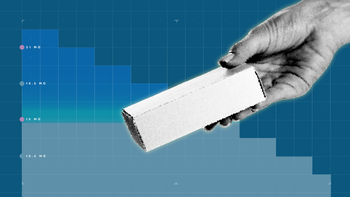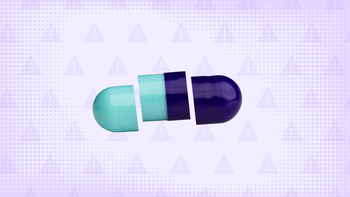
What Is Bipolar Disorder and How Is It Treated?
Key takeaways:
Bipolar disorder is a mental health condition that can cause unusual changes in mood, energy, and behavior.
Lithium, anticonvulsants, and antipsychotics are common medications used to treat bipolar disorder.
There’s no singular best treatment for bipolar disorder — the best treatment depends on a person’s symptoms, preferences, and medical history.

Bipolar disorder is a mental health condition that can cause people to experience unusual changes in mood, energy, and behavior. Often diagnosed in adolescence or early adulthood, it’s characterized by intense experiences of positive and negative emotions.
Bipolar disorder is a common condition that impacts over 4% of U.S. adults during their lives — it affects people regardless of age, race, ethnicity, or gender identity. It’s among the leading causes of disability worldwide, but thanks to advancements in modern medicine, many people with bipolar disorder are able to lead a normal life.
Here, we’ll discuss what bipolar disorder is, how it’s treated, and what the best medications used to treat it are.
What is bipolar disorder?
Like mentioned, people living with bipolar disorder tend to experience intense emotions — sometimes referred to as mood swings. Manic episodes — a type of euphoric experience — can cause someone to have high amounts of energy, activity, and irritability. On the other hand, depressive episodes can cause people to feel sad, hopeless, and potentially suicidal.
There are actually three forms of bipolar disorder — bipolar I disorder, bipolar II disorder, and cyclothymia. These different forms can cause different symptoms.
Bipolar I disorder: Someone with bipolar I disorder can alternate between manic and depressive episodes. Manic episodes may last for at least 7 days, and depressive episodes may last for at least 14 days. For some people, manic episodes may be so severe that immediate medical attention is needed.
Bipolar II disorder: Someone with bipolar II disorder experiences severe depressive episodes. They also have hypomanic episodes — less severe manic symptoms than what’s experienced with bipolar I disorder.
Cyclothymia: People with cyclothymia have hypomanic and depressive symptoms that aren’t as severe and don’t last as long as they do for people with bipolar II disorder. It’s considered to be a mild form of bipolar disorder.
Mixed features (episodes) — symptoms of both manic and depressive episodes happening at the same time — are also possible. They were once considered to happen only in bipolar I disorder, but now it’s thought that they can occur along the entire bipolar spectrum.
Other health conditions — such as substance use disorder and other mental health conditions — can also impact how severe symptoms are. Depending on someone’s form of bipolar disorder and overall medical history, the best treatment for a particular person can vary.
Quiz: Am I Bipolar?
Can bipolar disorder be cured?
At this time, there isn’t a cure for bipolar disorder, and it’s considered a lifelong condition. But, thankfully, treatments are available to help manage it.
Researchers are continuing to study bipolar disorder as time goes on. The exact cause of bipolar disorder isn’t known, but it’s thought to be due to a number of genetic and environmental factors. As more research and potential breakthroughs become available, there’s hope that healthcare providers will be able to more effectively help people with bipolar disorder in the future.
Does bipolar disorder worsen with age?
In some cases, yes. As some people with bipolar disorder get older, depressive symptoms can become more common over time. One study found that people diagnosed at age 44 or younger tend to experience more depressive symptoms over time compared to people diagnosed at 45 or older.
On the other hand, there isn’t much evidence that says if manic symptoms get worse over time. If you have bipolar disorder and you think your symptoms are changing with time, speak with your healthcare provider. They can help optimize your medications and other forms of treatment used to treat bipolar disorder.
What medications are used to treat bipolar disorder?
There are several medications used to treat bipolar disorder. In many cases, a combination of medications are used to help people with bipolar disorder.
Some medications are used to help treat manic, mixed, or depressive episodes when they are happening (called acute treatment). Others are used for maintenance treatment — this is when medications are used to control and prevent symptoms after experiencing an episode. However, many can be used for both acute and maintenance treatment.
Other therapies aside from medications can also treat bipolar disorder — such as psychotherapy and electroconvulsive therapy (ECT) — but this discussion will focus specifically on medications.
Lithium
Lithium is a medication that’s a type of mood stabilizer. Even though it’s been approved since 1970, it remains a first-choice treatment option today. It’s not specifically known how it works, but it’s considered effective for manic episodes, depressive episodes, mixed episodes, and maintenance treatment.
Lithium is typically used in people 12 years or older and is given 2 to 3 times daily. It’s available as a tablet, capsule, and oral liquid.
Although it’s noted to be effective for treating bipolar disorder, unfortunately lithium has a number of possible side effects. Common side effects can include being thirsty, frequently needing to go to the bathroom, and having general discomfort. But, the amount of lithium in the bloodstream needs to remain consistent, and if levels get too high, it’s possible to develop lithium toxicity.
Lithium has a small safety window, and certain things — such as a change in dietary salt or having a lower amount of sodium compared to normal — can raise the amount of lithium in your body. Lithium also has a number of possible medication interactions — including with nonsteroidal anti-inflammatory drugs (NSAIDs), angiotensin-converting enzyme (ACE) inhibitors, and angiotensin II receptor blockers (ARBs) — that can raise the risk for lithium toxicity.
Lithium toxicity, if experienced, is a medical emergency. Symptoms can include, but are not limited to:
Dizziness and weakness
Tremors or shakiness
Lack of responsiveness
Slurred speech
Lowered heart rate
Severe nausea and vomiting
Lithium is discussed more here.
Anticonvulsant medications
Three anticonvulsant (anti-seizure) medications — carbamazepine extended-release (Equetro), divalproex (Depakote), and lamotrigine (Lamictal) — are also widely used as mood stabilizers for bipolar disorder. Similar to lithium, they’re also first-choice options. They’re considered effective options for manic and mixed episodes, depressive episodes, and maintenance treatment.
There are many things to keep in mind with these complex medications. Choosing the best one is an individualized decision made by a healthcare provider. Their side effects are variable, they have medication interactions to consider, and they’re available in different dosage forms.
Divalproex: Also known as valproate or valproic acid, divalproex is the anticonvulsant with the most uses in bipolar disorder — this is discussed more below. Dosing can vary, but it’s available as a tablet, capsule, sprinkle capsule, oral liquid, and injection.
Lamotrigine: Available in various tablet forms — such as standard, chewable, and disintegrating tablets — lamotrigine has variable dosing. It’s a preferred medication for depressive episodes, and this is discussed more below.
Equetro: Of the three anticonvulsants, carbamazepine extended-release has the least amount of supporting evidence, particularly for maintenance therapy.
Atypical antipsychotic medications
Certain antipsychotic medications — also known as atypical antipsychotics or second-generation antipsychotics — are also used to treat bipolar disorder. They’re often used for treating manic episodes and mixed episodes.
Many antipsychotics are available. When choosing an antipsychotic, healthcare providers usually keep side effects and dosage form — such as tablet, oral liquid, or injection — in mind. Side effects can vary considerably, and they are described more here.
Two of the preferred atypical antipsychotics include:
Olanzapine (Zyprexa): Available as a tablet, disintegrating tablet, and injection, olanzapine can be given to people age 13 or older. Its dosing frequency depends on how it’s used — for acute episodes or for maintenance treatment — and how it’s given.
Risperidone (Risperdal, Risperdal Consta): Available as a tablet, disintegrating tablet, oral liquid, and injection, risperidone’s oral forms can be used in people age 10 and older and the injection can be used in adults. Its dosing frequency varies depending on how it’s used and given.
Several other atypical antipsychotics are available. For a full list, click or tap here.
Other medication options
If someone is experiencing symptoms that aren’t controlled well enough with the medications listed above, other ones are also available. These can include:
Antidepressants: These can be considered for bipolar disorder — specifically depressive episodes — if somebody is also taking a mood stabilizer, such as lithium. These can include bupropion (Wellbutrin), selective serotonin reuptake inhibitors (SSRIs) like paroxetine (Paxil), or serotonin norepinephrine reuptake inhibitors (SNRIs) like venlafaxine (Effexor). A combination medicine called olanzapine/fluoxetine (Symbyax) is also available.
Benzodiazepines: If someone is really agitated during a manic episode, short-term benzodiazepines — such as clonazepam (Klonopin) or lorazepam (Ativan) — can be used to help control symptoms. These are usually only given while in the hospital.
What is the best medication for bipolar disorder?
In short, there’s no one best medication for bipolar disorder. Bipolar disorder is a very variable condition, and the best medication varies by person. Different people may respond better to certain medication combinations than others.
Disclaimer aside, the American Psychiatric Association (APA) is an organization that puts together treatment guidelines for bipolar disorder. These guidelines help show — depending on the situation — which medications can typically be considered first.
This is discussed more in the following table:
| Situation | Recommended medications |
|---|---|
| Manic episodes — severe | Lithium + antipsychotic ± benzodiazepine Divalproex + antipsychotic ± benzodiazepine |
| Mixed episodes — severe | Divalproex + antipsychotic ± benzodiazepine |
| Mixed episodes — severe | Divalproex + antipsychotic ± benzodiazepine |
| Manic episodes — mild to moderate |
Lithium Divalproex Antipsychotic |
| Depressive episodes — severe | Lithium + antidepressant |
| Depressive episodes — mild to moderate |
Lithium Lamotrigine |
| Maintenance — preferred |
Lithium Divalproex |
The bottom line
Bipolar disorder is a mental health condition that can cause unusual changes in mood, energy, and behavior. Depending on the severity and type of symptoms someone has, lithium, anticonvulsants, and antipsychotics can be helpful. Although some medications are generally recommended as first-choice options, the true best medication varies by person.
Why trust our experts?


References
AbbVie Inc. (2021). Depakote ER [package insert].
American Psychiatric Association. (2019). What is electroconvulsive therapy (ECT)?
American Psychiatric Association. (2019). What is psychotherapy?
American Psychiatric Association. (2021). What are bipolar disorders?
Atlantic Biologicals Corp. (2021). Risperidone, solution [package insert].
Bryant Ranch Prepack. (2021). Olanzapine, orally disintegrating [package insert].
Camber Pharmaceuticals, Inc. (2021). Lithium carbonate [package insert].
Chokhawala, K., et al. (2021). Antipsychotic medications. StatPearls.
Colombo, C., et al. (2012). Bipolar disorder. Depression Research and Treatment.
Coryell, W., et al. (2009). Age transitions in the course of bipolar I disorder. Psychological Medicine.
Depression and Bipolar Support Alliance. (n.d.). Bipolar disorder statistics.
Eli Lilly and Company. (2020). Zyprexa [package insert].
Hedya, S. A., et al. (2021). Lithium toxicity. StatPearls.
Hirschfeld, R. M. A., et al. (2010). Practice guideline for the treatment of patients with bipolar disorder. American Psychiatric Association.
Janssen Pharmaceuticals, Inc. (2021). Risperdal consta [package insert].
MedlinePlus. (2019). Lithium toxicity.
MedlinePlus. (2020). Cyclothymic disorder.
Muneer, A. (2017). Mixed states in bipolar disorder: Etiology, pathogenesis and treatment. Chonnam Medical Journal.
National Institute of Mental Health. (n.d.). Bipolar disorder.
National Institute of Mental Health. (2020). Bipolar disorder: Overview.
Nature.com. (n.d.). Bipolar disorder. Nature Portfolio.
RemedyRepack, Inc. (2021). Olanzapine [package insert].
Rising Pharma Holdings, Inc. (2021). Lamotrigine, chewable [package insert].
Rowland, T. A., et al. (2018). Epidemiology and risk factors for bipolar disorder. Therapeutic Advances in Psychopharmacology.
ScieGen Pharmaceuticals, Inc. (2021). Lamotrigine, orally disintegrating [package insert].
Shorter, E. (2009). The history of lithium therapy. Canadian Institutes of Health Research.
Solé, E., et al. (2017). Mixed features in bipolar disorder. CNS Spectrums.
Sun Pharmaceuticals Industries, Inc. (2021). Risperidone, orally disintegrating [package insert].
Torrent Pharmaceuticals Limited. (2021). Lamotrigine [package insert].
Torrent Pharmaceuticals Limited. (2021). Risperidone [package insert].
Validus Pharmaceuticals LLC. (2016). Equetro [package insert].
For additional resources or to connect with mental health services in your area, call SAMHSA’s National Helpline at 1-800-662-4357. For immediate assistance, call the National Suicide Prevention Lifeline at 988, or text HOME to 741-741 to reach the Crisis Text Line.

























